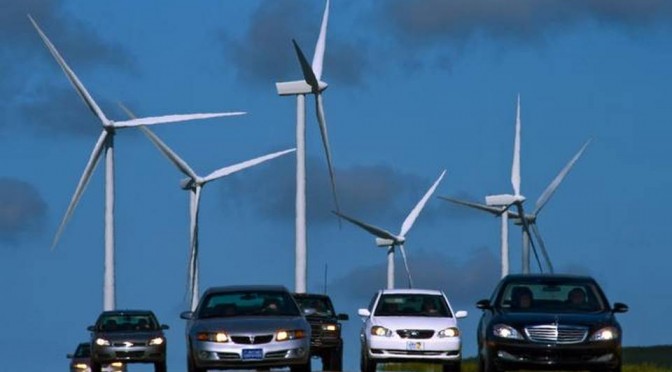Kansas has nearly 3,000 megawatts of wind energy capacity in 25 wind farms, placing it among the top states in the nation.
This year started slowly, with months going by with little activity. But at this point, there are four wind farms under construction, with about 475 megawatts of capacity. They are Slate Creek wind farm in Sumner County, Waverly wind farm in Coffey County, Alexander wind farm in Rush County and Marshall wind farm in Marshall County.
In the development stage are a number of larger wind farm projects that may be built in 2015 or 2016.
The agency in charge of coordinating regional power consumption, the Southwest Power Pool, lists applications for wind farms in Kansas seeking to get on the electrical grid. Excluding the four wind farms already under construction, the six wind farms under development and approved for construction total 1,800 megawatts.
One of those is Western Plains, a wind farm near Spearville in Ford County developed by Infinity Wind Power of Santa Barbara, Calif.
Infinity CEO Matt Riley said developers must wait for the utilities to issue the power purchase agreements. The wind farm will be built only if an agreement is issued and a developer wins the contract to supply the power.
“I think there are a fair amount of good projects that are poised for construction, but they are waiting of PPA,” Riley said.
Although the utilities like the subsidy, it’s really not critical to whether they buy wind-generated energy, he said. What makes wind power so compelling is that, at the moment, it is close to the lowest-price electricity, and that price can be locked in for 20 years by contract.
“It’s a way to hedge gas price volatility and the environmental regulation of coal,” Riley said.
That means, he said, there will be a market for wind energy even when projects no longer qualify for the production tax credit after 2016.
This year marks a resurgence in wind farm construction. Developers built facilities generating 1,441 megawatts’ worth of energy in Kansas in 2012 but just 250 in 2013 because they raced so hard to get their projects up and going the year before, in case federal incentives were allowed to die.
This year, however, developers could take their time because of the way the federal production tax credit law was written. The tax credits expired at the end of last year, but the law allowed developers to formally start their projects in 2013, halt work for many months and then finish them later. The wind farms generally must be built by 2016 to qualify for the tax credits.
Jacob Susman, CEO of OWN Energy, a wind energy developer in Brooklyn, N.Y., said developers have had to be scrupulous about following the law. They had to actually start the projects in 2013 or face losing the tax credits.
“The IRS has been pretty smart about the developers having to put their money where their mouth is,” he said. “With this project, we did things, such as dig the foundations and started work on roads and poured several foundations. This wasn’t brushing off some ground and putting up a fence. This was bona fide construction.”
http://www.kansas.com

